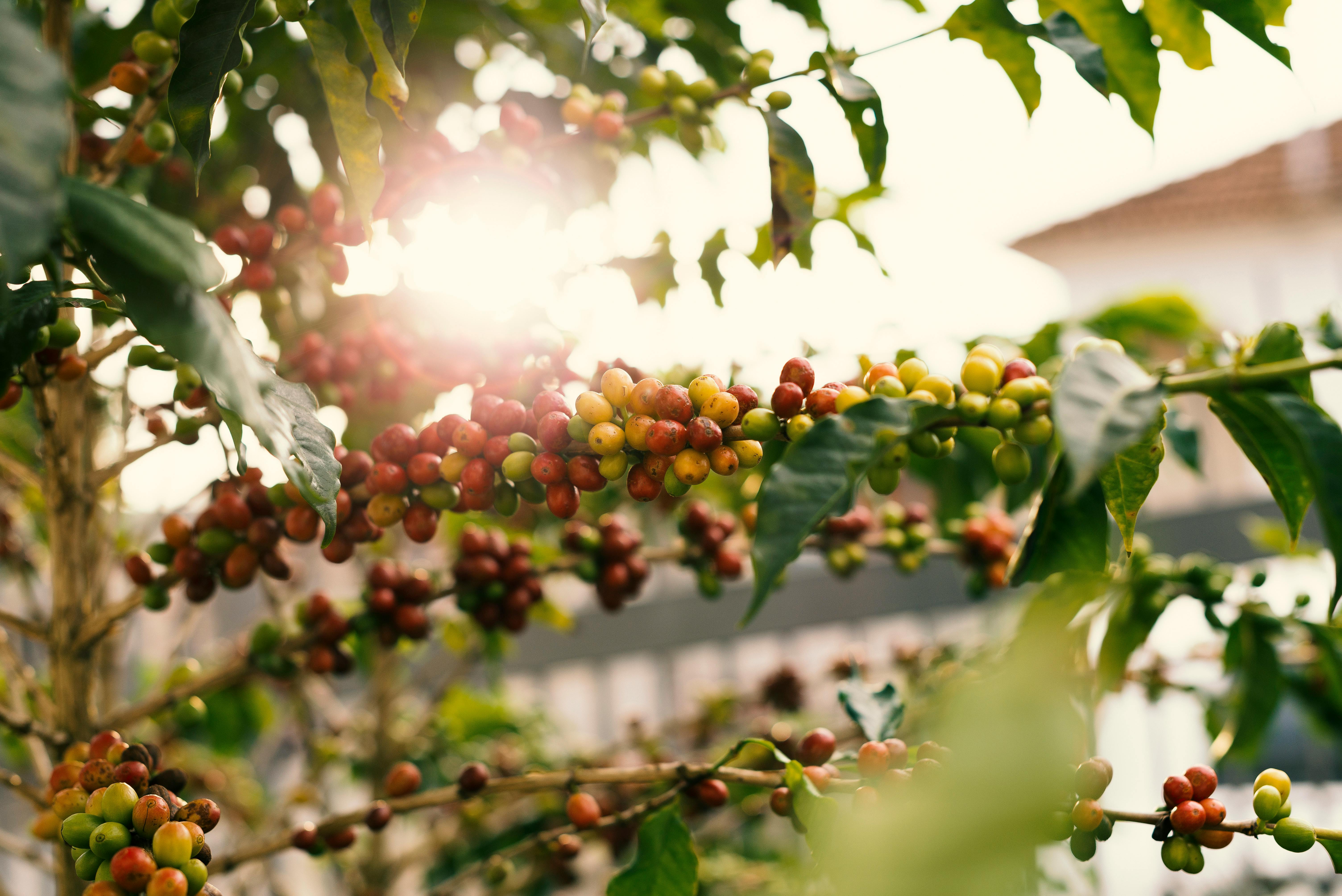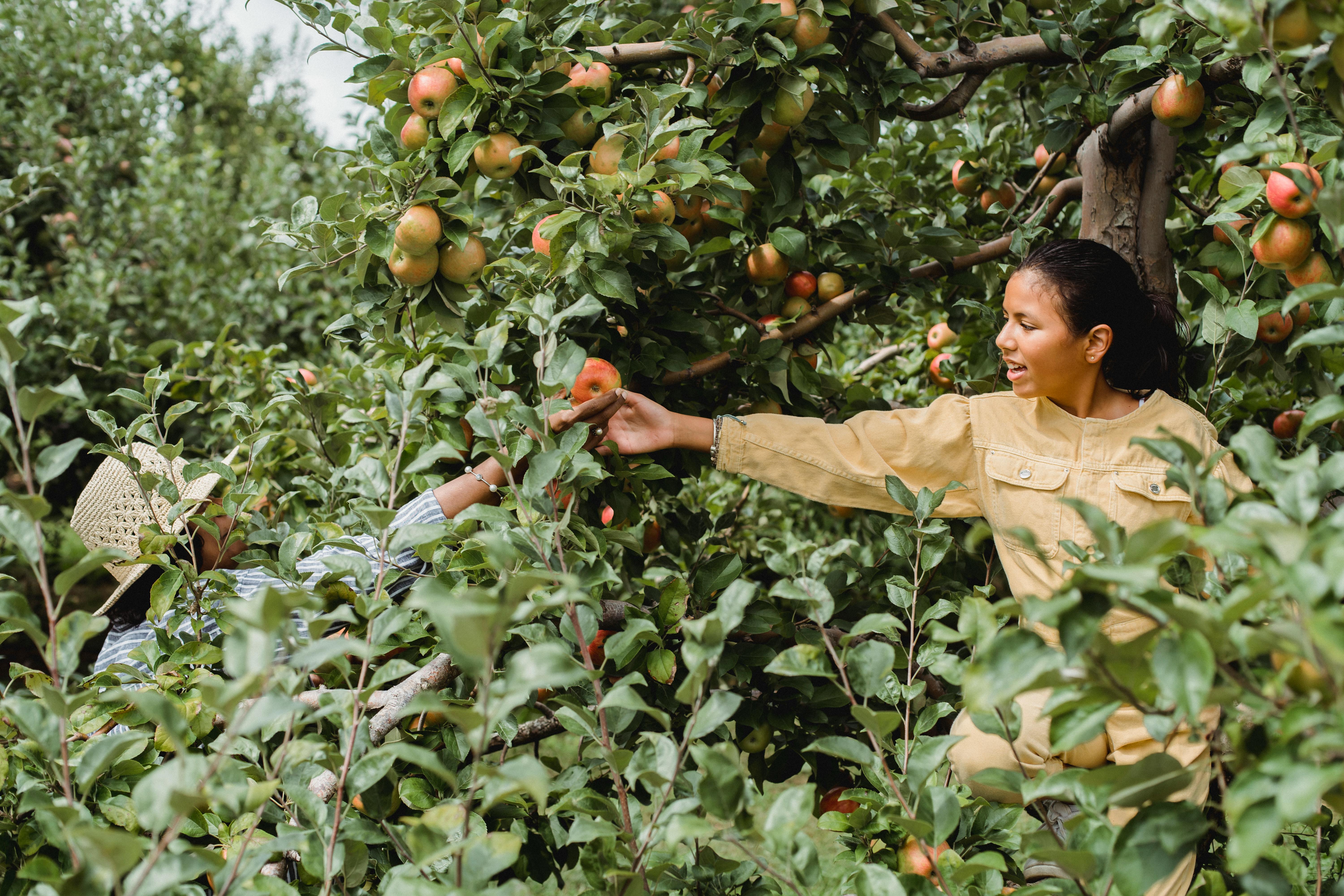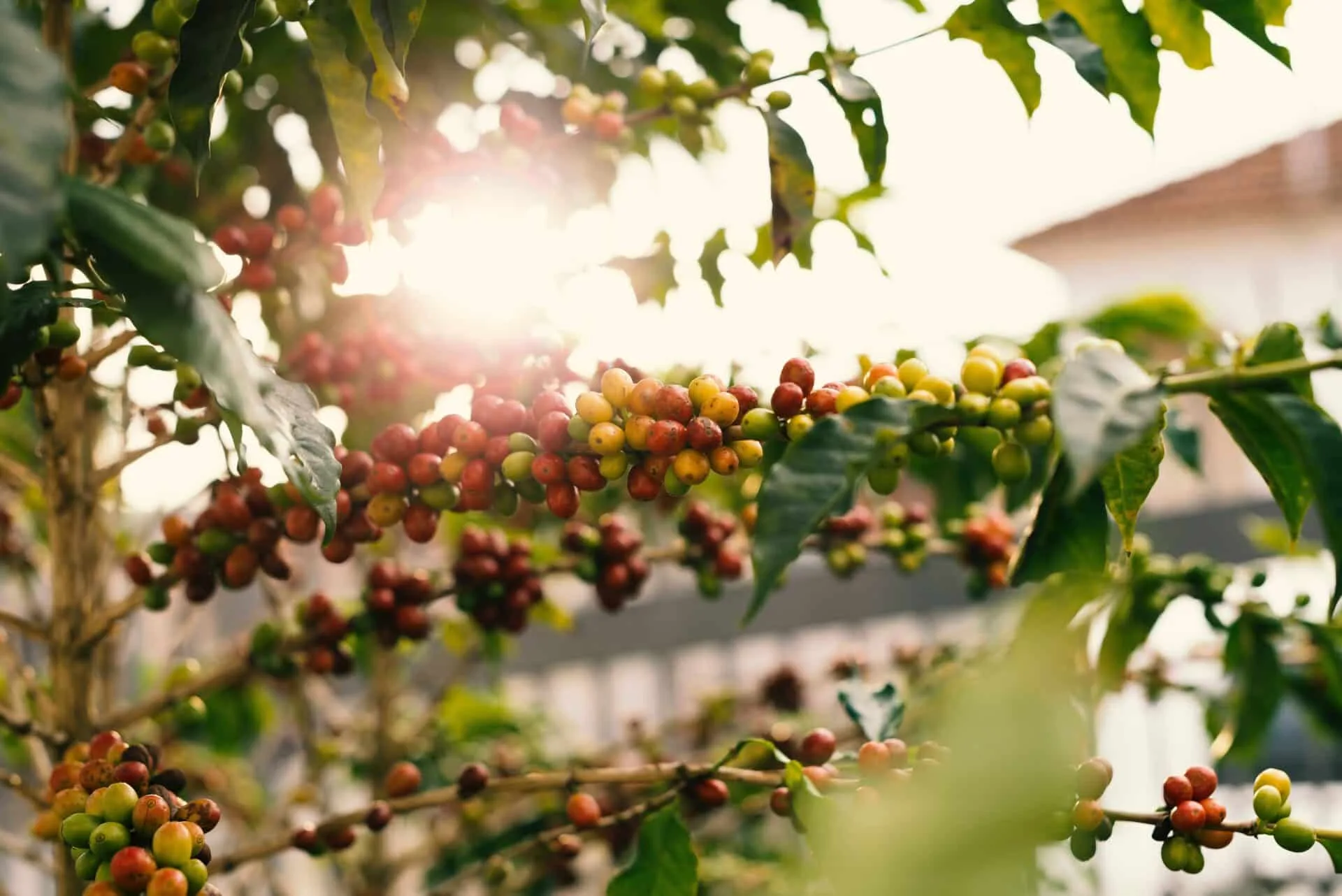Do all plants produce fruit? The simple answer is no. While some plants require pollination in order to produce a fruit, not all plants will do so. In fact, many plants are grown strictly for their leaves, flowers, and stems rather than any edible fruits. There are a variety of reasons why some plants do not produce fruit, from the type of plant to the environment in which it is growing. In this article, we will explore why some plants don’t produce fruit and look at some examples of those that don’t.Many types of plants produce fruit, including trees, shrubs, vines and herbaceous plants. Common fruit-bearing trees include apple, citrus, cherry, peach, pear and plum. Shrubs such as currant and raspberry produce small fruits that are popular for jams and jellies. Grapes are a type of fruit produced by vines while cucumbers, squash and tomatoes are examples of fruits produced by herbaceous plants.
Benefits of Eating Fruit
Eating fruit is a great way to get a variety of vitamins, minerals, antioxidants, and other essential nutrients. Fruits are low in calories and provide an excellent source of fiber, which can help reduce your risk for heart disease and stroke. Fruits are also packed with antioxidants that can help protect your cells from free radical damage, which can lead to premature aging. Additionally, eating fruit can help you maintain a healthy weight as they are low in calories but high in fiber which helps you feel fuller for longer. Eating a variety of fruits also helps ensure that you get all the essential vitamins and minerals your body needs.
Fruits contain phytochemicals, compounds found in plants that may have disease-fighting properties. Many fruits are rich sources of vitamin C, which is important for skin health. Vitamin C-rich fruits like oranges and grapefruit also contain flavonoids which may help reduce inflammation and boost the immune system. Other antioxidant compounds such as beta-carotene found in carrots and lycopene found in tomatoes have been linked to reducing the risk of certain types of cancer. Eating a variety of colorful fruits will provide you with many different types of beneficial phytochemicals.
In addition to the many health benefits associated with eating fruit, it is also a delicious way to enjoy a sweet treat without added sugar or artificial sweeteners. Many people find that eating fresh or frozen fruit satisfies their cravings for something sweet without having to worry about the unhealthy effects of added sugars or artificial sweeteners. Fruits are also very versatile and can be enjoyed on their own or added to salads, smoothies, yogurt parfaits, overnight oats or other healthy dishes for extra flavor and nutrition.
How do Plants Produce Fruit?
Fruit production in plants is a complex process that requires multiple steps and elements to occur successfully. In order for a plant to produce fruit, it must first be pollinated. Pollination is the transfer of pollen from one flower on the plant to another flower on the same or different plant, with the goal of fertilizing the ovules within the flower. Pollination can be achieved through either self-pollination, when pollen is transferred from one flower to another on the same plant, or cross-pollination, when pollen is transferred between flowers on different plants.
Once a flower has been pollinated, it will begin to develop into a fruit. During this process, the ovary walls of the flower form a protective layer around the seeds and develop into edible flesh. This flesh will typically contain sugar and other nutrients that animals find attractive as well as providing protection for the seed until it is ready to sprout.
The development of fruits also requires adequate sunlight and water for photosynthesis and proper growth. When these conditions are met, fruits can start ripening. This process involves changes in color and texture as well as increases in sweetness due to increasing sugar levels in the fruit flesh.
Finally, after ripening has occurred, fruits are ready for animals or humans to consume them and spread their seeds far away from their parent plant. This helps ensure that plants are able to reproduce and continue their species for generations to come.
In summary, plants require pollination in order to produce fruit which involves adequate light and water for photosynthesis and proper growth before they can be ripe enough for consumption by animals or humans who will then help spread their seeds far away from their parent plant.
Different Types of Fruits
Fruits are one of the most common and most widely consumed foods around the world. They come in a variety of shapes, sizes, colors, and textures. Fruits can be divided into two categories: those that are eaten fresh, such as apples and oranges, and those that are processed or cooked into jams, jellies, and other products. There are many types of fruits available, ranging from tropical fruits to temperate fruits.
Tropical fruits are found in regions near the equator such as Central America, South America, Africa, and Asia. These fruits typically include mangoes, papayas, bananas, pineapples, limes, coconuts and guavas. They tend to have a sweet flavor and can be eaten fresh or used for cooking.
Temperate fruits grow in regions with colder climates such as North America and Europe. Apples are one of the most popular temperate fruits and come in a variety of colors including reds, greens and yellows. Other temperate fruits include pears, plums, cherries and strawberries. These fruits tend to have a tart flavor and can be eaten fresh or used for baking desserts or jams.
Citrus fruits are also popular around the world but are typically grown in warmer climates such as Florida or California in the United States. Citrus fruits include lemons, limes oranges grapefruits tangerines and kumquats. These fruits have a tangy flavor that is often used for cooking sauces or marinades or garnishing cocktails.
Exotic fruit is another category of fruit that is becoming more popular around the world due to its unique flavors and health benefits. Exotic fruit includes acai berries dragon fruit passion fruit durian jackfruit starfruit lychee rambutan mangosteen tamarind guava kiwano soursop longan sapodilla physalis mamey sapote jabuticaba feijoa carambola pomegranate cactus figs custard apples honeydew melons loquats etcetera.
No matter what type of fruit you prefer there is sure to be something that suits your taste buds! Fruits provide essential vitamins minerals fiber antioxidants phytonutrients and other important nutrients that can help keep us healthy so it’s important to incorporate them into our diets regularly
What Conditions Are Needed for Fruits to Grow?
Fruit trees need certain conditions in order to grow and produce fruit. These conditions include ample sunlight, adequate water, proper soil nutrients, and the correct temperature. Sunlight is essential for photosynthesis, which helps the tree produce food. Trees need at least 6 hours of direct sunlight each day in order to be healthy and productive. Adequate water is also important for healthy growth and fruiting; fruit trees should be watered deeply a few times each week. The soil should have enough nitrogen, phosphorus, and potassium to ensure proper nutrition for the tree. Lastly, the temperature must remain within a certain range for fruits to thrive; most fruits prefer warm days with cool nights.
In addition to these basic environmental conditions, pruning and pollination can help promote healthy fruit production. Pruning helps remove dead or diseased branches as well as thinning out overcrowded areas of the tree canopy to allow more light penetration. Pollination requires insects or other animals that are capable of transferring pollen from one flower to another; without pollination, fruits will not develop properly. By providing these necessary requirements, you can ensure your fruit trees are healthy and productive for many years to come!

Encouraging Plants to Produce Fruit
Encouraging plants to produce fruit is an important part of gardening. There are several steps you can take to ensure your plants produce fruit. Firstly, it is important to choose the right variety of plant for the climate and soil you have available. Secondly, you should ensure that the plant receives adequate amounts of sunlight, water, and nutrients. Thirdly, pruning and training your plants correctly will help them to flower and set fruit. Finally, providing pollinators with access to your plants will help them in producing fruits.
To choose the right variety of plant for your climate and soil type, research which types of fruits grow best in your area. Different varieties have different requirements for soil type, sunlight exposure, and watering habits. Once you have chosen the right variety of plant for your garden, ensure that it has adequate sunlight exposure during the day. Inadequate sunlight can lead to stunted growth or no growth at all. Additionally, make sure that your plants are watered regularly and receive enough nutrients from fertilizers or composts to promote healthy growth.
Next, pruning and training are important steps to help encourage fruit production in plants. Pruning helps remove dead or diseased branches from the plant while training helps shape a plant into a desired form so that it is more capable of bearing fruits. Proper pruning also encourages flowering by removing old woody branches from the center of a shrub or tree so that new buds can form on younger shoots at its base.
Finally, providing pollinators with access to your plants is an effective way to increase their chances of producing fruit. Pollinators like bees and butterflies help by transferring pollen between flowers so they can create fruits with seeds inside them. You can attract pollinators by planting flowers in close proximity to your fruiting plants or creating habitats such as bee homes in your garden for them to live in.
By following these steps you can encourage your plants to produce fruit successfully!
Fruits and Vegetables
Fruits and vegetables are both important parts of a balanced diet. While they have many similarities, there are also some key differences between them. Fruits are typically sweet and contain seeds or pits, while vegetables are usually savory or bitter in taste and do not contain seeds. Fruits often contain more sugar than vegetables, while vegetables typically have more fiber than fruits.
Most fruits can be eaten raw, while some vegetables may need to be cooked before eating them. Fruits provide essential vitamins and minerals, while vegetables provide the same nutrients but also important phytochemicals which can help protect against certain diseases. In terms of preparation for meals, fruits usually make a good snack or dessert, while vegetables can be used as part of a main course or side dish.
When it comes to nutrition, both fruits and vegetables are important sources of vitamins and minerals that our bodies need to stay healthy. Eating a variety of both is recommended for optimal health as each type contains different types of nutrients that our bodies require. Additionally, some fruits and vegetables contain antioxidants which help protect against disease-causing free radicals in the body.
In conclusion, although there are many similarities between fruits and vegetables, there are also key differences that set them apart from one another. Both foods offer essential vitamins and minerals that our bodies need for optimal health so it is important to include both in your diet for a well-rounded meal plan.
Are All Fruits Edible?
It is a common misconception that all fruits are edible; in reality, some fruits are not safe to eat. Fruits that are not safe to eat may be poisonous, or they may contain toxins, such as cyanide, which can cause serious health problems if ingested. There are also some fruits that have an unpleasant flavor or texture that make them unappetizing and thus not good for eating.
When it comes to determining whether a fruit is edible or not, it is important to consider the plant from which it came. Some plants produce both edible and non-edible fruits; for example, the tomato plant produces both cherry tomatoes, which are edible, and nightshade berries, which are poisonous. Additionally, some plants produce both edible and inedible varieties of the same fruit; for example, watermelons come in both edible and non-edible varieties.
In addition to considering the plant from which a fruit came from when determining its edibility, it is also important to take into account any potential allergens that may be present in a particular fruit. For instance, people who suffer from food allergies should avoid eating certain types of fruits even if they appear to be safe for consumption.
Finally, it is important to note that many fruits require processing before they can be safely consumed; this includes things like washing and peeling them before eating. Additionally, some fruits must be cooked before they can be eaten as well as properly stored in order to prevent spoilage or contamination.
In conclusion, while many fruits are safe for consumption without any additional processing or preparation required, there are also some types of fruit that should not be eaten due to their potential toxicity or other factors. It is therefore important to do research on the type of fruit in question before consuming it in order to ensure its edibility and safety.

Conclusion
No, not all plants produce fruit. Fruit is a unique product of flowering plants (angiosperms). Many plants, such as ferns, conifers and grasses produce seeds but no fruit. Fruits are the result of a complex process that involves pollination, fertilization and maturation. Not all flowering plants produce fruits either; some have flowers without fruit-producing ovaries.
The production of fruits is an important part of a plant’s reproduction cycle. The fruit protects the seeds and helps disperse them to new environments where they can germinate and grow into new plants. Fruit also provides food for animals, which helps to spread the plant’s seeds further away from its parent plant.
In conclusion, while not all plants produce fruit, many species rely on it to ensure their survival in the long run. Therefore, it is essential that we protect and preserve our fruiting plants for future generations.



